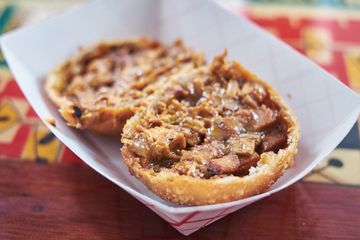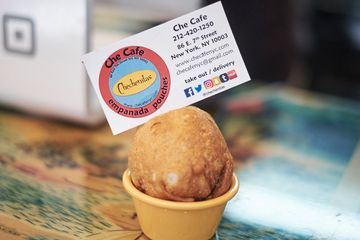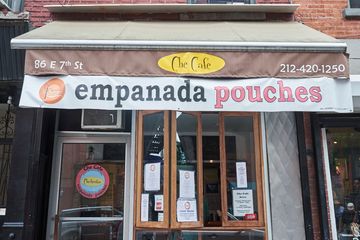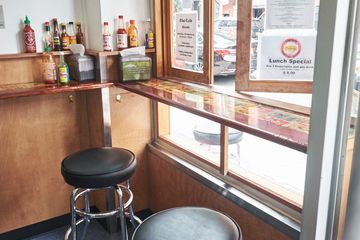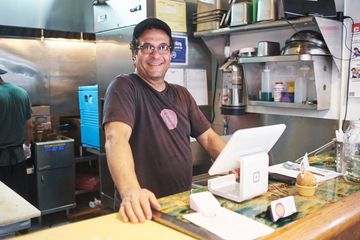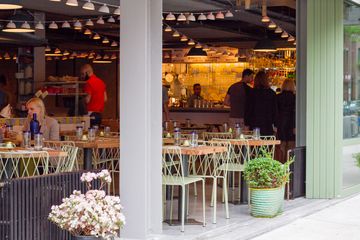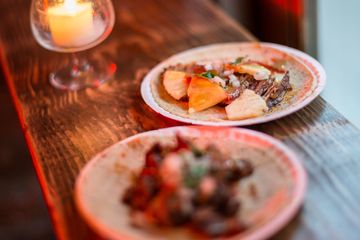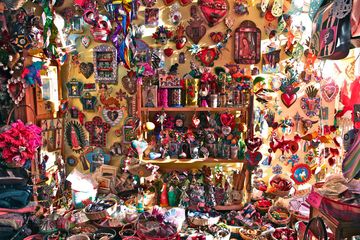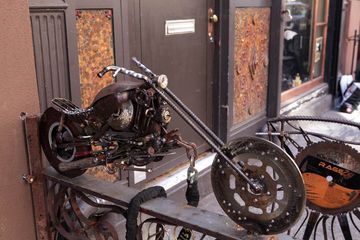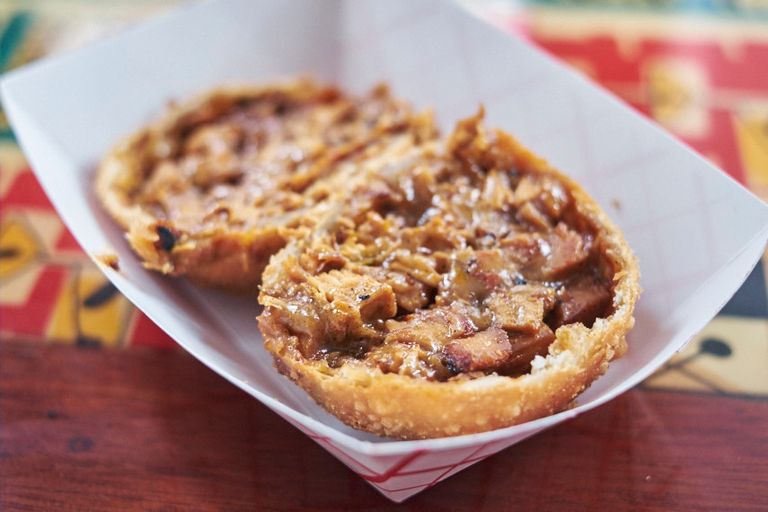
Mark Merker became enamored with burritos after trying them for the first time while he was attending school in San Francisco. Unable to find burritos in New York quite like the ones he had eaten in California, he started Harry’s and Benny’s Burritos. After owning Mexican restaurants for years, Mark decided to try his hand at Latin street food, specifically the South American staple, empanadas.
Something was missing, however, from the traditional recipes that he had found. “The beef was just beef,” he told me. “It was very basic. None of it added volume to the flavor.” Now, at Benny's Burritos & Empanadas, which opened in the spring of 2017, Mark sells the “chechenita,” a variation of the empanada, which he describes as an “empanada pouch.”
Mark explained that the influences for the Chechenita come from a variety of cultures. “It isn’t just one culture that goes into it,” he said. “It is very American in that sense.” We could not help but burst out into laughter, too. As we sat at the counter facing the windows, open to the passersby on the street, Amelia tried the Cheesesteak Chechenita. She said that it was rich and warm, with just the right amount of dough: "The perfect afternoon snack."
Three decades ago, Mark opened a Mexican restaurant just across the street. When he began contemplating Benny's Burritos & Empanadas, it seemed only natural to return to the East Village."There was just something about the neighborhood that kept the sense of community alive. It’s like I’m coming back home.”
